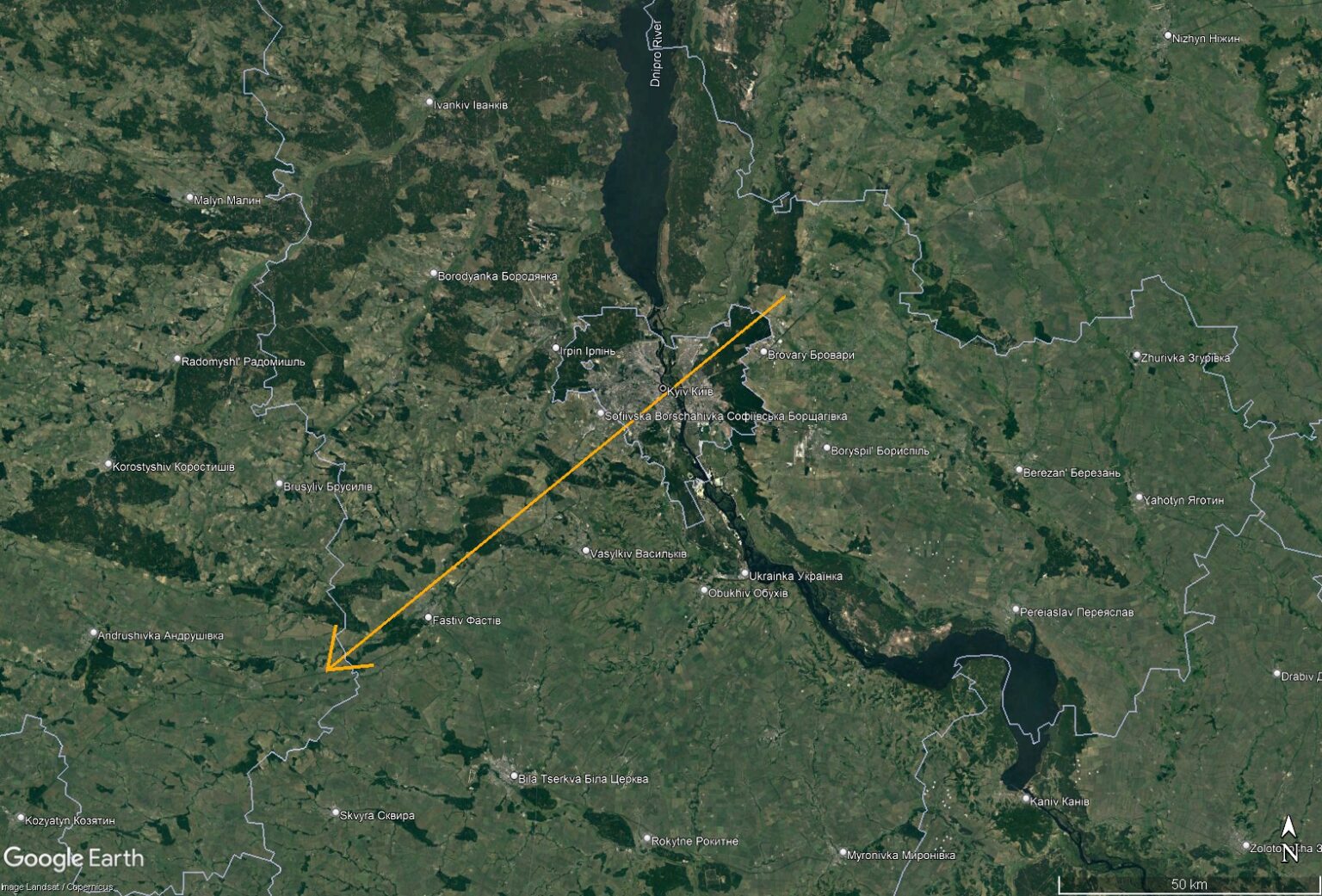The International Meteorite Organization published data on the mass and trajectory of the bolide, which frightened the residents of Kyiv on the evening of April 19. It had an initial mass of about 200-300 kg and its fragments could have fallen to the southeast of Kyiv.

Kyiv bolide through the eyes of Europeans
The bolide, which scared the residents of the capital of Ukraine on the evening of April 19, had a mass of 200-300 kg. This is reported by the International Meteorite Organization. Then the people of Kyiv thought that this was another Russian missile attack or even the fall of a satellite shot down by the air defense system.
However, this event was recorded by the cameras of the European Fireball Network; therefore, there is no doubt that this is the fall of a large meteorite. It is for the accurate recording of such events that this system is created, initiated by the Czech Academy of Sciences.
The event was recorded by the easternmost automatic cameras of the European Fireball Network, located in Slovakia near the settlements of Kolonica and Stará Lesná. Radiometric light curves were also obtained from the last observation point. Also, the beginning of the glow of the bolide was recorded by a camera at the Bardos Lajos Elementary School in Hungary.
It should be noted that the listed observation points are located 580-760 km from the accident site. However, we knew for sure thanks to them that the bolide over Kyiv broke out at 09:57:20 p.m. local time and burned for about 5 seconds.
Where to find meteorite debris?
Scientists found that the bolide was first observed at an altitude of 98 km above the Velyka Dymerka. It was moving southwest at a speed of 29 km/s and flew across Kyiv at an altitude of 80 km. The flash, which scared everyone so much, occurred at an altitude of 38 km. The brightness of this event reached -18 magnitude; this makes it possible to classify this meteor as a superbolide.
The first flare was followed by the second, which occurred at an altitude of 32.5 km, and then three more at altitudes of 31, 30 and 29.5 km. The last time the bolide was seen 23 km above the ground, when its speed was 10 km/s. The length of the ground projection of the trajectory is 132 km with an average angle to the horizon of 32 degrees.
Scientists estimate the initial mass of the meteoroid at 200-300 kg. However, due to the high speed, almost all of its material burned up in the atmosphere. At least the flare profiles indicate that the debris could not have been more than 1 kg. But if they still reached the ground, then you need to look for them somewhere between the villages of Romanivka, Popil’nya, Pavoloch and Strokiv on the border of the Kyiv and Zhytomyr regions to the southwest of Fastov.
The orbit of the body before it entered the Earth’s atmosphere was more asteroid than cometary, but had a very significant inclination to the ecliptic of 46 degrees. The period of rotation is about two years, which suggests that this rock could have flown near the Earth as early as 2021.
According to www.imo.net.
Follow us on Twitter to get the most interesting space news in time
https://twitter.com/ust_magazine

